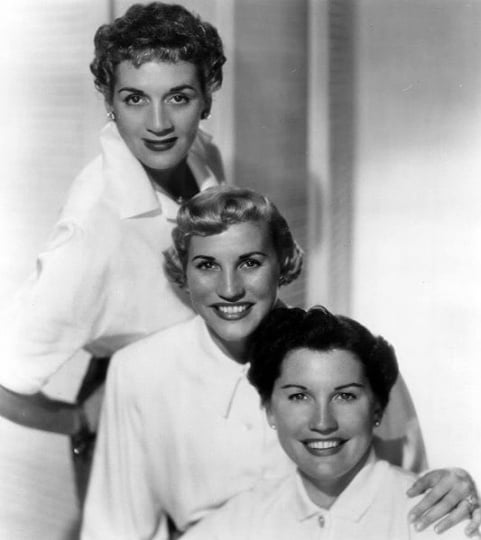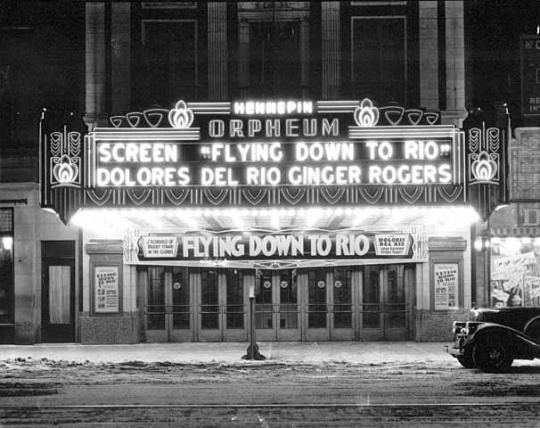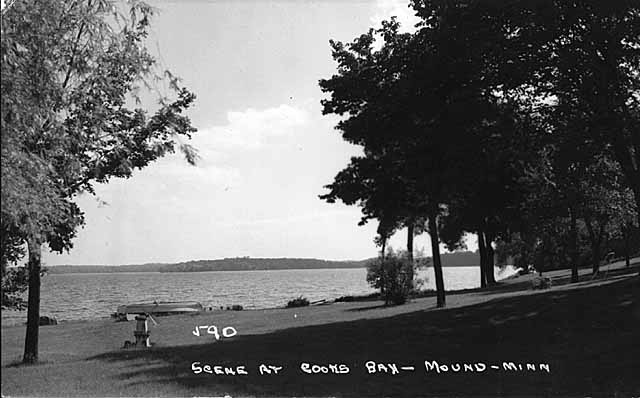The Andrews Sisters hold a singular place among the many famous Minnesota-born musical talents who have made it big. Rising to fame in the swing era of the late 1930s, they developed their successful close-harmony formula early on. Patty, the blond mezzo-soprano, sang lead; Maxene, the brunette, sang soprano; and LaVerne, the redhead, sang contralto. The trio recorded more than six hundred songs, sold over ninety million records, earned fifteen gold records, and had a dozen number-one hits. Forty-six of their tunes made it to the Billboard Top Ten chart—more than either Elvis Presley or The Beatles.
The sisters were born to an unlikely couple. Peter Andreos (changed to Andrews by immigration officials) emigrated from Greece to Minneapolis, where he rented a room from a Norwegian family. In 1910 he married the landlord's daughter, Olga Sollie. He told his bride he wanted a giant family—ten strapping boys. Instead, he got LaVerne Sophia (b. 1911), Maxine "Maxene" Angelyn (b. 1916), and Patricia Marie (b. 1918). When they were little, the three mimicked their favorite singing group, the popular Boswell Sisters.
In 1931 the sisters won a talent contest at the Orpheum Theatre in Minneapolis, and were invited to join the traveling vaudeville troupe that had hosted it. After nearly six years of struggling for small-time gigs, the sisters were on the verge of quitting show business. But in 1937 they sang on the Saturday Night Swing Club radio show, broadcast from the Edison Hotel in New York City. The following night, they sat in the Edison's soda fountain, hoisting a final toast to their failed dreams.
In her 1993 memoir Over Here, Over There, Maxene wrote about that night. As they sat in the soda fountain, in walked a man with pointed-toe shoes and a wide, snap-brim hat. In a gruff New York tone, he announced he was looking for the Andrews Sisters.
"Who's asking?" they responded. "Jack Kapp from Decca Records," the man said. "He wants them to come audition."
In unison, they declared, "We're the Andrews Sisters!"
Their first major hit was a song based on a Yiddish folk tune, "Bei Mir Bist Du Schön" (To Me, You Are Beautiful). It sold seventy-five thousand copies and rocketed to the Billboard magazine chart's number-one slot in January 1938.
Two years later, they signed a contract with Universal Pictures. In 1941 they made three movies, including Buck Privates, starring the comic duo Abbott and Costello. It featured two of the Andrews's biggest hits, "(I'll Be with You) In Apple Blossom Time" and "Boogie Woogie Bugle Boy."
During World War II, the Andrews Sisters entertained extensively on the home front, visiting military bases and hospitals. In the summer of 1945 they took an eight-week overseas tour, singing for the troops on behalf of the United Services Organization (USO).
The Andrews Sisters recorded new hits after the war, including "I Can Dream, Can't I?" (1949), and they all married. But big changes in their lives were on the way. Their mother died in 1948, their father in 1949. Maxene was divorced in 1949, Patty in 1950.
The sisters had long been squabblers. For thirteen weeks in 1940, for instance, they sang together but did not speak to one another. Now, having lost many of their key supporters—their arranger, manager, record-label president, parents, and spouses—they also lost the will to maintain the trio. In 1953 Patty left to pursue solo work.
In 1956 the three sisters appeared together on a TV special. After the show, they were flooded with fan mail. That June the trio officially reunited, resuming an active recording and performing career that lasted well into the 1960s. In 1967 LaVerne died of liver cancer. Patty and Maxene decided to continue performing separately.
But they began fighting again. In March 1974 they opened on Broadway in Over Here!, a nostalgic World War II musical. The show was hugely successful, but it abruptly closed early the following year due to disputes between the sisters and with the producers.
During the next two decades, the two sisters never reconciled but did perform separately. Maxene died of a heart attack in 1995. Patty died in 2013, at her home in Glendale, California.







